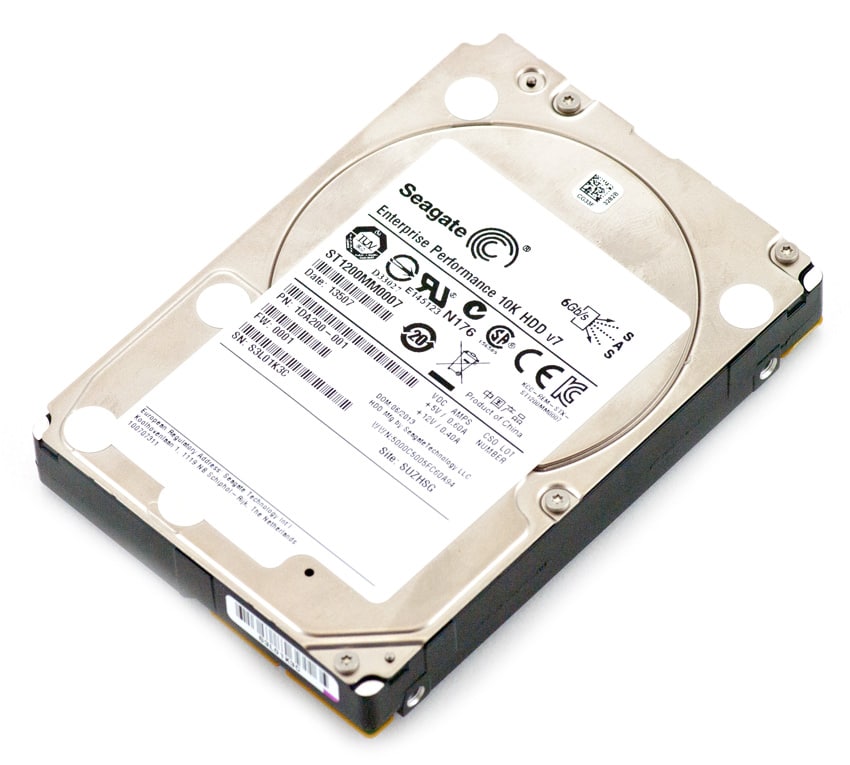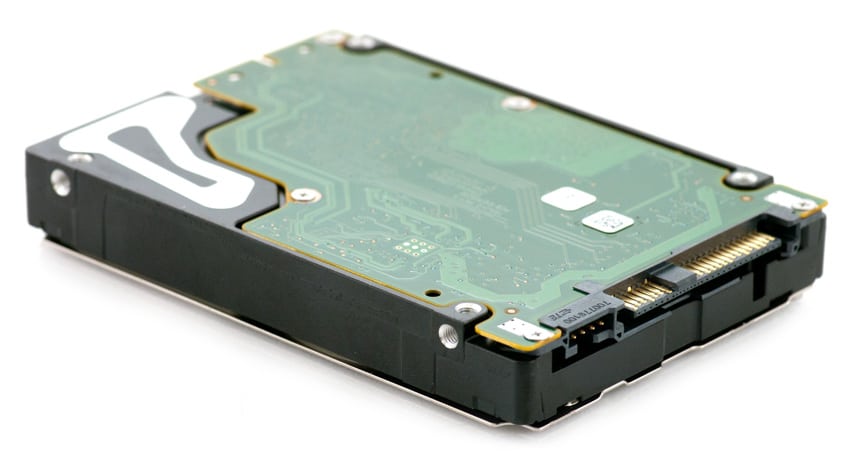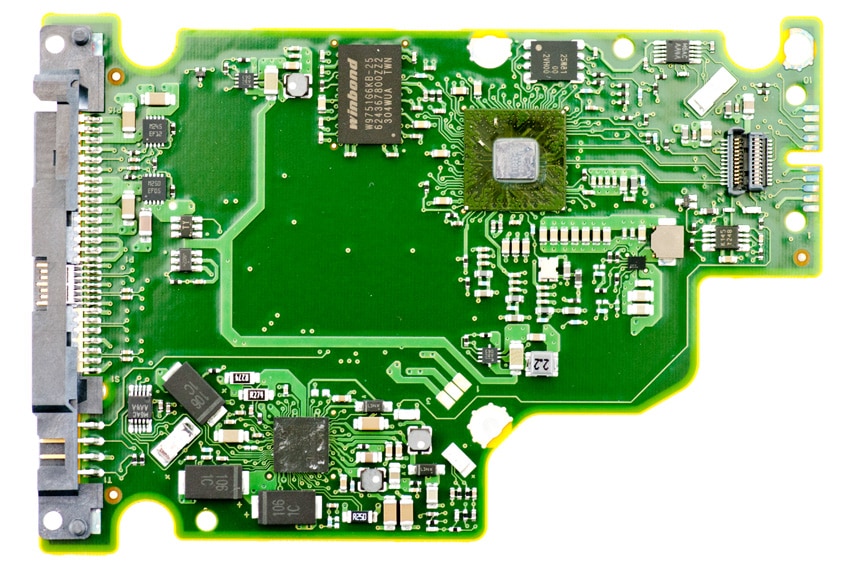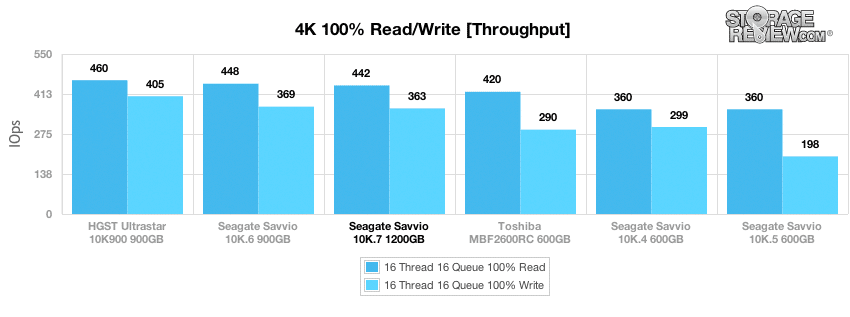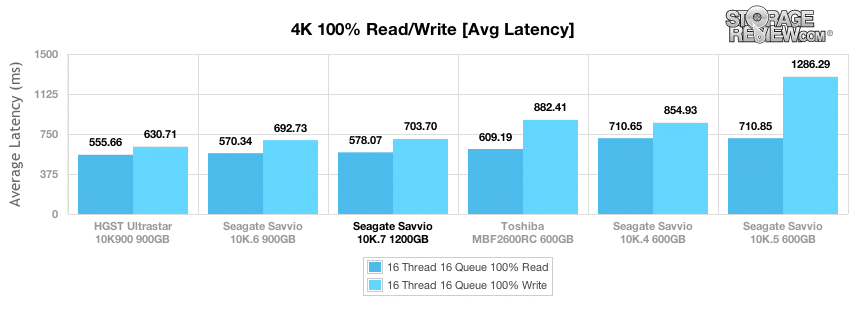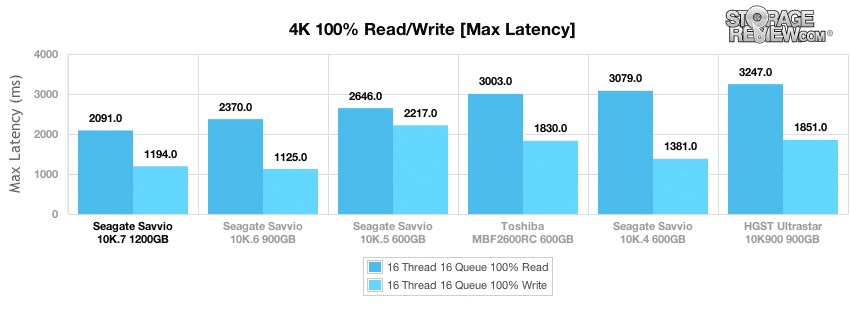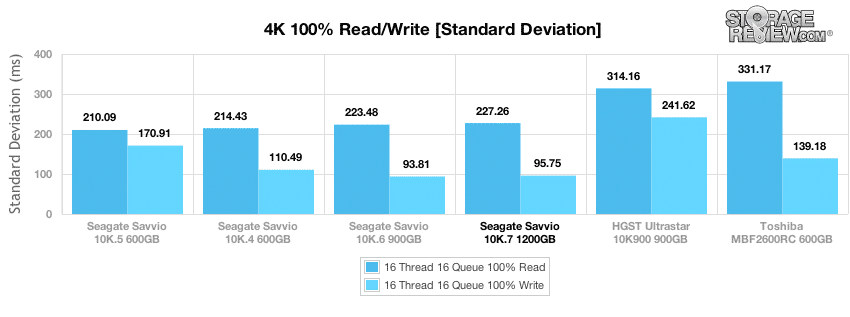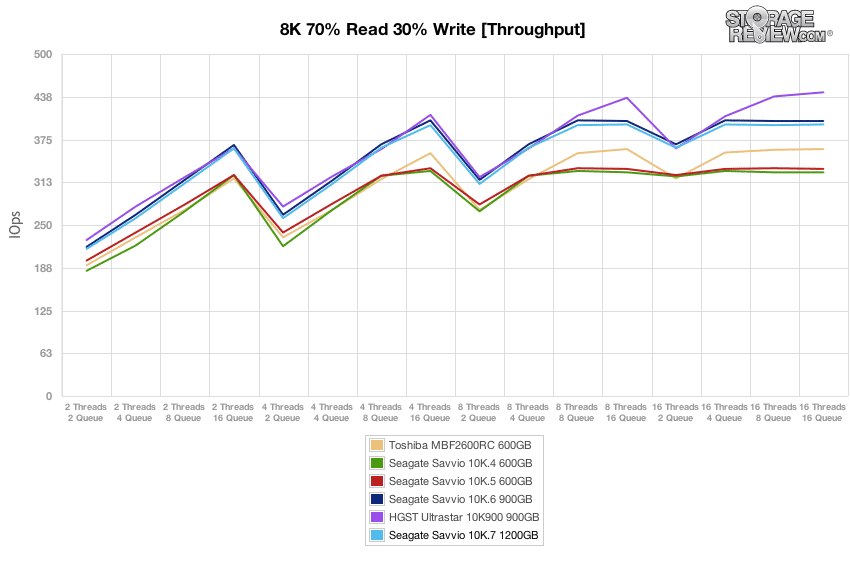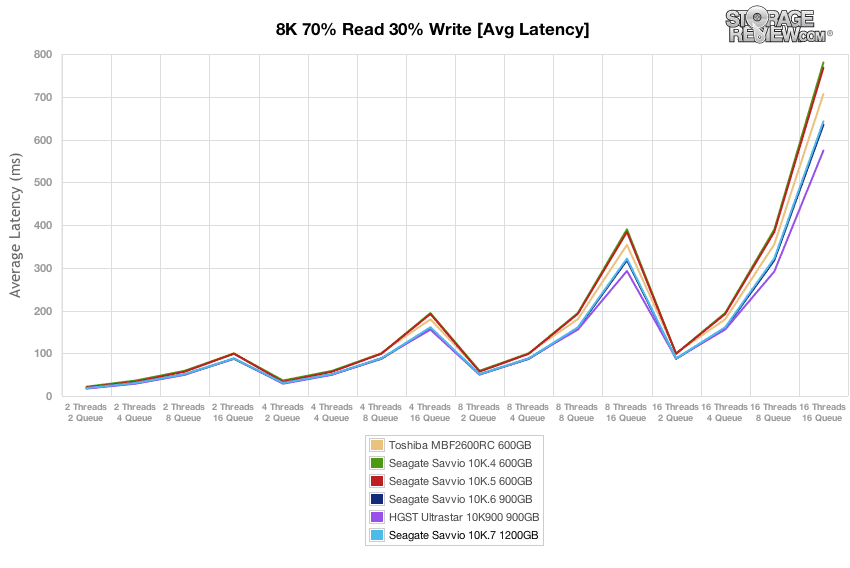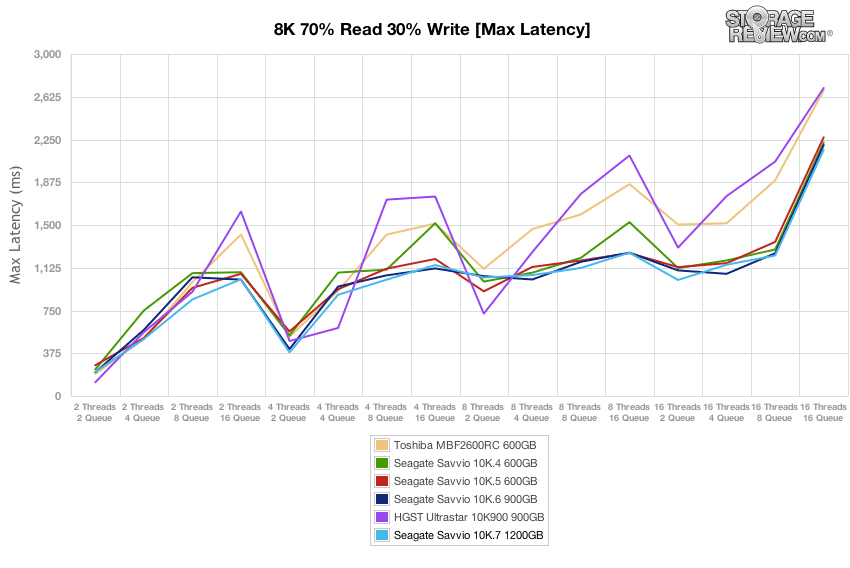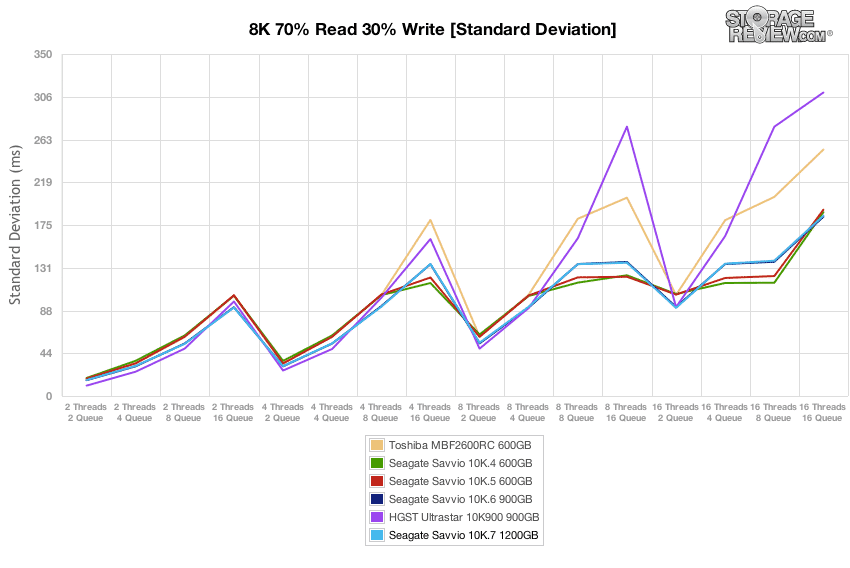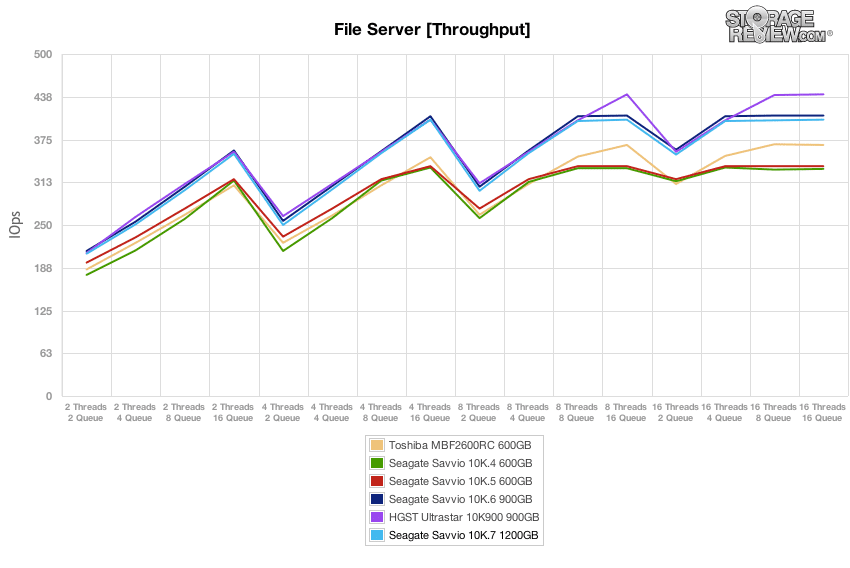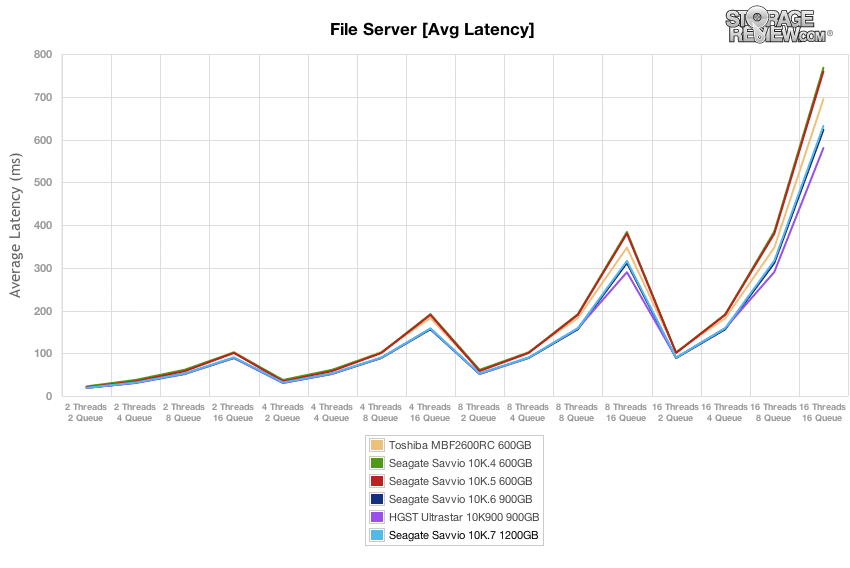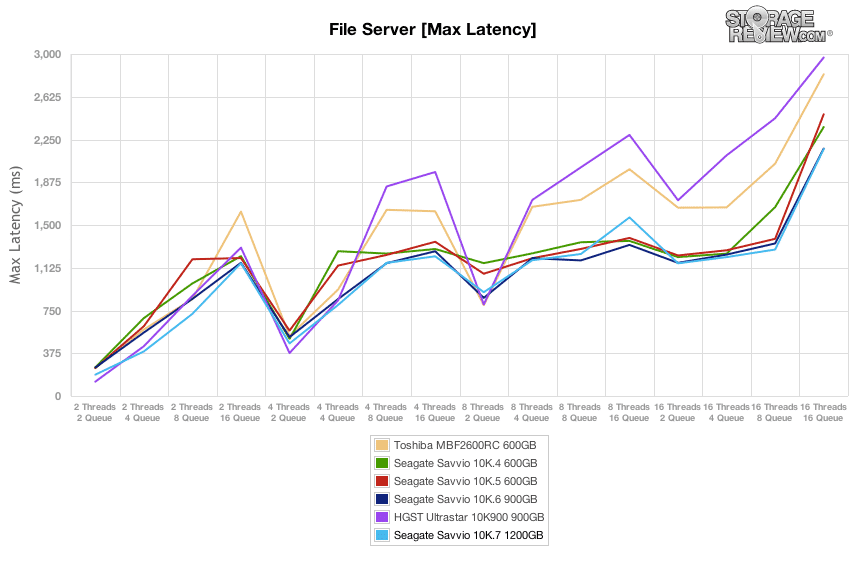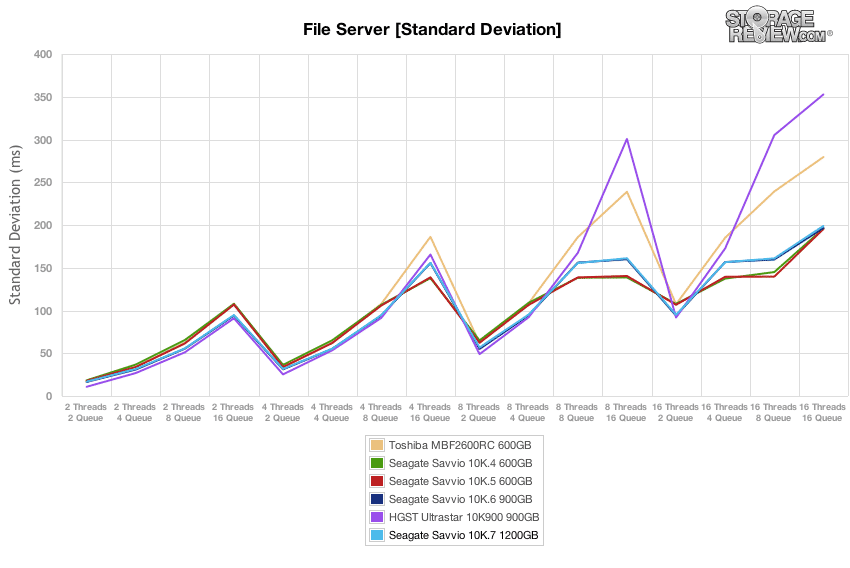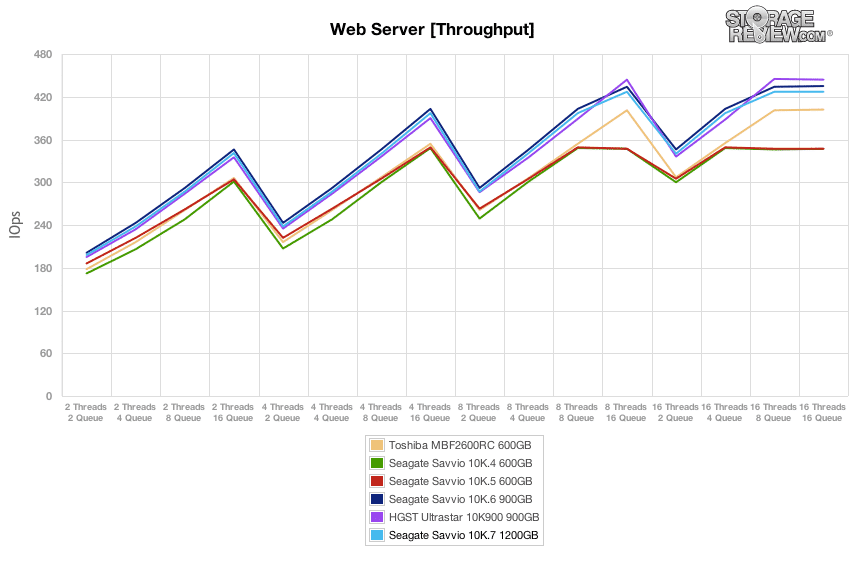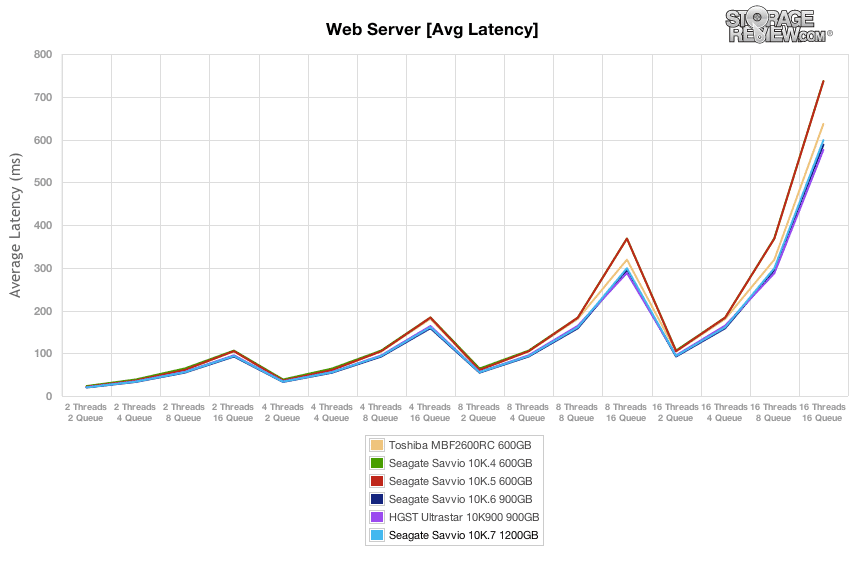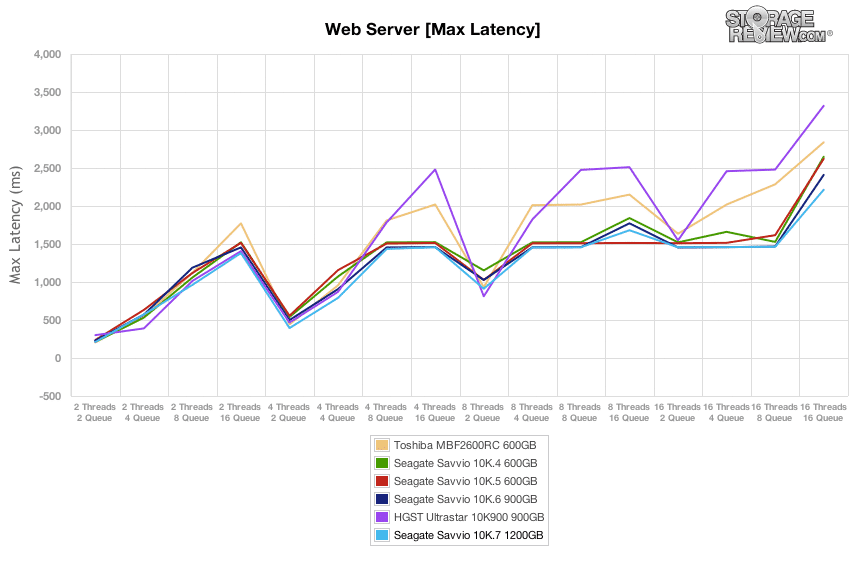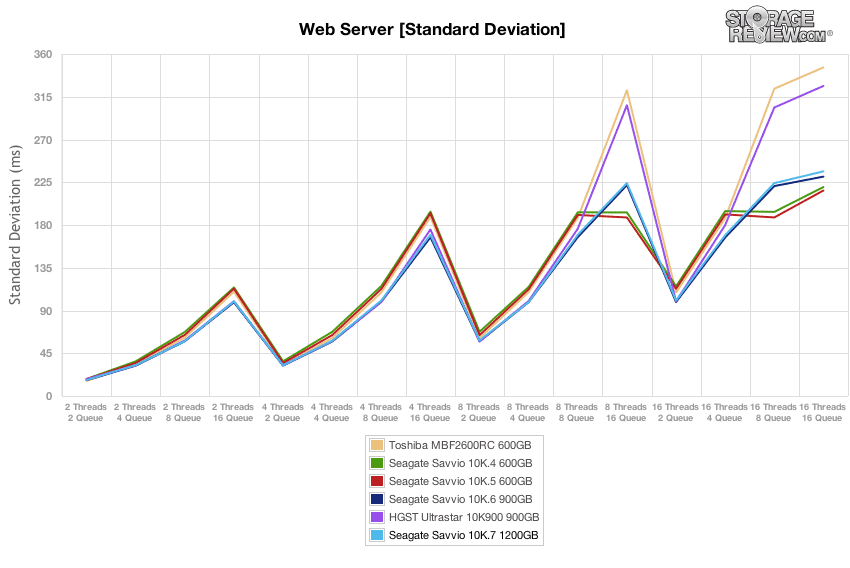
The Seagate Enterprise Performance 10K HDD v7 is a 15mm 2.5" form factor drive that ships in a 1.2TB capacity, interfaces over 6Gb/s SAS, and, as the name implies, spins at 10K RPM. The 10K.7 succeeds the Enterprise Performance 10K HDD v6, aka the Savvio 10K.6 that we reviewed earlier this year, and with the new 10K.7, Seagate aims to match high performance with low overall power consumption to deliver a reduced TCO to organizations deploying drives for data centers and cloud environments. On that note, Seagate quotes sequential data transfers at up to 204MB/s, which is aimed at meeting the marks of some 15K RPM legacy HDDs, and the average operating power rating is 8.02W with typical idle operation at 4.65W.
Noted above, the 10K.7 is available in a single capacity point at 1.2TB thanks to four 300GB platters. This differs from the 10K.6 which was available in four capacities, none breaking the 1TB mark: 300GB, 450GB, 600GB and 900GB. Other comparables in the 10K RPM, 2.5" class also predominantly max out at either 600GB or 900GB, meaning that the 10K.7 offers 33% more storage than others in the space.
Similar to the previous generation 10K.6, the 10K.7 also delivers a couple of Seagate's own features to drive functionality. The first is Instant Secure Erase (ISE) technology which reduces the amount of time it takes to erase data from a drive. Without this kind of technology, the process can be a hassle for organizations repurposing or disposing of a slew of drives. The 10K.7 also features RAID Rebuild technology which is designed to make recoveries faster and safer, PowerChoice for T10-compliant power management, and Protection Information (PI) which protects against inadvertent data change. Rounding out the included features, the 10K.7 also features standard encryption with optional FIPS for greater security, which is how Seagate deployed their highest capacity 10K.6 (900GB).
The Seagate Enterprise Performance 10K HDD v7 is available now and features a five year limited warranty.
Seagate Enterprise 10K.7 Specifications
- Capacity: 1.2TB – 4 platters (ST1200MM0017)
- Interface: 6Gb/s SAS
- Spindle Speed (RPM): 10K
- Average Latency (ms): 2.9
- Sustained Data Rate OD: 204MB/s
- Cache (MB): 64MB
- Nonrecoverable Read Errors per Bits Read: 1 per 1016
- Annualized Failure Rate (AFR): 0.44%
- Power Management
- Typical Op (amps) +5V/+12: 0.38/0.51
- Power Idle: 4.6W
- Environmental
- Temperature, Operating (°C): 5 to 55
- Temperature, Nonoperating (°C): –40 to 70
- Shock, Operating: 11ms (Gs): 40
- Shock, Nonoperating: 2ms (Gs): 400
- Acoustics Idle (bels—sound power): 3.4
- Vibration, Operating: <500Hz (Gs): 0.5
- Vibration, Nonoperating: <500Hz (Gs): 3.0
- Dimensions (HxWxD): 15mm x 70.10mm x 100.45mm
- Weight: 0.45lb (204g)
- Warranty: 5 years
Design and Build
The Seagate Enterprise Performance 10K HDD v7 (10K.7) is a 2.5" form factor drive with a height of 15mm. The drive's design continues in the footsteps of its predecessors offering a near-identical appearance. The top features the product information label with the related specs such as capacity and interface. The sides of the drive provide four screw holes for simple mounting.
On the 10K.7 HDD, Seagate has implemented 64MB of cache via a Winbond W9751G6KB-25 module as well as a Marvell i1062-B0 controller.
Testing Background and Comparables
10,000RPM Enterprise HDD comparables for this review:
- HGST Ultrastar C10K900 900GB
- Seagate Savvio 10K.4 600GB
- Seagate Savvio 10K.5 600GB
- Seagate Savvio 10K.6 900GB
- Toshiba MBF2600RC 600GB
All enterprise HDDs are benchmarked on our enterprise testing platform based on a Lenovo ThinkServer RD240. The ThinkServer RD240 is configured with:
- 2 x Intel Xeon X5650 (2.66GHz, 12MB Cache)
- Windows Server 2008 Standard Edition R2 SP1 64-Bit and CentOS 6.2 64-Bit
- Intel 5500+ ICH10R Chipset
- Memory – 8GB (2 x 4GB) 1333Mhz DDR3 Registered RDIMMs
- LSI 9211 SAS/SATA 6.0Gb/s HBA
Enterprise Synthetic Workload Analysis
Our enterprise hard drive benchmark process preconditions each drive into steady-state with the same workload the device will be tested with under a heavy load of 16 threads with an outstanding queue of 16 per thread, and then tested in set intervals in multiple thread/queue depth profiles to show performance under light and heavy usage. Since hard drives reach their rated performance level very quickly, we only graph out the main sections of each test.
Preconditioning and Primary Steady-State Tests:
- Throughput (Read+Write IOPS Aggregate)
- Average Latency (Read+Write Latency Averaged Together)
- Max Latency (Peak Read or Write Latency)
- Latency Standard Deviation (Read+Write Standard Deviation Averaged Together)
Our Enterprise Synthetic Workload Analysis includes four profiles based on real-world tasks. These profiles have been developed to make it easier to compare to our past benchmarks as well as widely-published values such as max 4k read and write speed and 8k 70/30, which is commonly used for enterprise drives. We also included two legacy mixed workloads, the traditional File Server and Webserver, each offering a wide mix of transfer sizes.
- 4k
- 100% Read or 100% Write
- 100% 4k
- 8k 70/30
- 70% Read, 30% Write
- 100% 8k
- File Server
- 80% Read, 20% Write
- 10% 512b, 5% 1k, 5% 2k, 60% 4k, 2% 8k, 4% 16k, 4% 32k, 10% 64k
- Webserver
- 100% Read
- 22% 512b, 15% 1k, 8% 2k, 23% 4k, 15% 8k, 2% 16k, 6% 32k, 7% 64k, 1% 128k, 1% 512k
In the first of our enterprise workloads, we measured a long sample of random 4k performance with 100% write and 100% read activity to get our main results. The Seagate 10K.7 1.2TB measured 363 IOPS read and 442 IOPS write, both of which fell below the HGST's class-leading marks. The figures were just about on par with the 10K.6.
In our main average latency segment with a load of 16T/16Q, we measured an average read latency of 578.07ms and a write latency of 703.70ms from the Seagate 10K.7 1.2TB, which again was edged out by the 10K.6 and the HGST.
Measuring just read activity, the Seagate 10K.7 1.2TB had the best max response time which registered 2,091.0ms, while the write activity max latency of 1,194.0ms was second only to the 10K.6.
Reviewing the 4k latency consistency in our standard deviation section, the Seagate 10K.7 1.2TB tested behind the previous generation 10K.4, 10K.5 and 10K.6s, but ahead of the other comparables. At 95.75ms for write activity, it was edged out only by the 10K.6.
Compared to the fixed 16 thread, 16 queue max workload we performed in the 100% 4k write test, our mixed workload profiles scale the performance across a wide range of thread/queue combinations. In these tests, we span workload intensity from 2 threads and 2 queue up to 16 threads and 16 queue. In the expanded 8k 70/30 test, the Seagate 10K.7 1.2TB placed behind the HGST and the 10K.6, with throughput that ranged from 215 IOPS to 397 IOPS in the terminal queue depth.
Looking over the 8k 70/30 average response times, the Seagate 10K.7 1.2TB posted the third lowest average latency at 642.51ms, again edged out by the 10K.6 and more so by the HGST in the terminal queue depths.
Over the duration of our primary tests at varying thread and queue depth levels, the Seagate 10K.7 1.2TB had competitive max latency. Though the HGST and Toshiba drives began with lower max latency at 2T2Q, the 10K.7 posted the lowest max latency figure at 16T16Q of around 2,159.6ms.
For the majority of the thread/queue spectrum, the Seagate 10K.7 1.2TB maintained latency lower than all of the comparables until 16T4Q. Then, the 10K.6 barely edged it out for the remainder of the testing.
The next workload we used is our File Server profile which puts the drives through a varying workload. We scaled the thread and queue count from 2T/2Q up to 16T/16Q. Under this range of workloads, the Seagate 10K.7 1.2TB lower than the HGST and marginally lower than the 10K.6 with a max of around 404 IOPS.
At all queue depths, the Seagate 10K.7 1.2TB was bested by the HGST and the 10K.6. Its average latency peaked at about 631.72ms.
Comparing peak response times in our File Server profile, the HGST posted the best figure in 2T2Q, but after that point, the Seagate 10K.7 1.2TB was best-in-class. The Seagate peaked at 2166.8ms.
Looking at the latency standard deviation, the Seagate 10K.7 1.2TB posted 198.98ms, which was marginally higher than its siblings, but was quite a bit lower than the HGST and Toshiba drives.
Our final test is the Web Server test, which is traditional 100% read activity. The Seagate 10K.7 1.2TB peaked at 427 IOPS at 8T16Q, a number it held into the final queue depths. That placed the 10K.7 below the 10K.6 and the HGST.
The Seagate 10K.7 1.2TB performed just above the HGST and the 10K.6 in our next test of average latency in the Web Server profile with a mark of 598.57ms.
Looking at Max Latency in our Web Server profile, the Seagate 10K.7 1.2TB performed with the lowest max response time in the terminal queue depth at 2214ms.
Comparing latency consistency in our read-only Web Server profile, the Seagate 10K.7 1.2TB positioned behind its siblings, but ahead of the HGST and Toshiba drives.
Conclusion
The Seagate Enterprise Performance 10K HDD v7 (10K.7) is a single capacity, 1.2TB drive that ships as a 2.5" SFF, 6Gb/s SAS interfacing 10K RPM HDD. Seagate engineered the 10K.7 to meet the needs of data centers and cloud environments that need not just the robust performance that 15K-class drives deliver, but also more robust capacity. The 10K.7 does just that, providing 133% of the storage offered with the 10K.6, and up to 150% of that found in competing 15K drives. Seagate also positions the 10K.7 to compete at the higher-end by enabling it to achieve quoted sequential data transfers at up to 204MB/s. Power efficiency is also assured with an average operating power rating of 8.02W and a typical idle operation at 4.65W.
The Seagate Enterprise Performance 10K HDD v7 performed consistently across all of our tests: 4k, 8k, web server and file server. It delivered admiral marks generally placing near the upper-end of the group in throughput, average latency and max latency. In max latency, the 10K.7 actually delivered the highest marks throughout all of the tests. Further, while the 10K.7 didn't deliver the most throughput and came in third place in all profiles (4k, 8k, file and web server) for that category, it was generally bested only by the HGST Ultrastar C10K900 and the 10K.6. When the 10K.6 performed better in testing, it was only marginally, and in real-world usage, noticeable differences would be unlikely. Overall, the drive didn't put up the strongest performance marks across the board, but it did provide solid marks, especially given that it's the only drive tested that can claim the stronger 1.2TB mark.
Pros
- Highest capacity in its class at 1.2TB
- Best-in-group max latency
Cons
- No performance gain over previous generation 10K.6
Bottom Line
The Seagate Enterprise Performance 10K.7 brings a 33% boost in storage capacity to the 10K RPM, 2.5" HDD segment with a 1.2TB capacity. The drive also performs well, having consistently offered throughput and average latency at the upper end of the group, with class-best max latency.

